- We showed that a black background and white font was conventional for a drama film.
- We also expressed our reason for adding a red flower design to show delicacy and hint at the danger and violence in the film, successfully represnting our drama genre.
- We explained that a generalised date is conventional of teaser trailers.
- We also explained that the particualr date 'Autumn 2012' would enable us around a year to successfully build on our promotional package and consequently suspense.

- It was expalined that we had used the church and bathroom to make the mise-en-scene as realistic as possible.

- We said that we used the wedding dress trail to make our audience focus on the main character throughout the trailer whilst we tracked their movement up the aisle.
- There was also the use of dark make-up to present bruising and represent the domestic violence and therefire the genre and possible narrative.
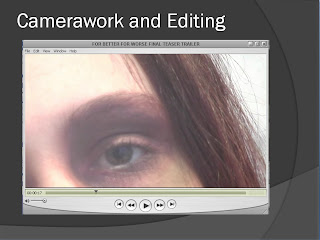
- We showed the class that we used extreme zooms and close-ups to focus on the brutality of the bruises and therefore shock the audience.

- We made it clear that the extreme zooms and close-ups also successfully teased the audience, because they were unable to see the main character at full view until the very end, therefore creating tension and suspense.

- We chose the Warner Bros. distributors as they had managed to produce the BAFTA Award winning drama film 'Slumdog Millionaire' and because of it's success, we thought this would be the perfect instituation to promote our film. We were also hoping that FILM4 would promote our film, however, we were unable to find the FILM4 opening credit.
How effective is the combination of your main product an ancillary texts? 
- We compared our teaser trailer with the drama film 'Social Network' as there were many similarites including white fonts and black backgrounds and a slow revealing of the main character whilst a voiceover that hints at a specific narrative is playing.
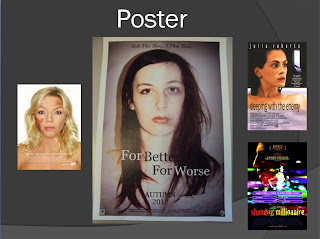
- We presented our intial inspiration of the domestic abuse poster along with the Sleeping with the enemy poster to present similar conventions of a film poster, like the central image and black font for the title.
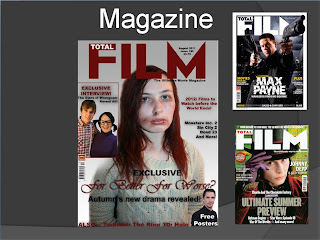
- We showed the class how we had chosen Total Film for our publisher and therefore we had to find a font that was similalr to the actual magazine font. We explained that we wanted to maintain our red and monochrome colour scheme in order to maintain contunity and so our audience would be able to successfully identify themselves with the film.
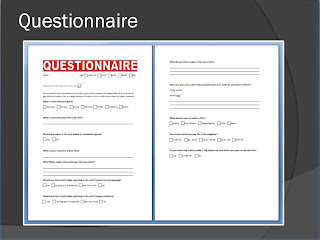
- It was important that we explained why we had produced a questionnaire during the presentation. We explained that it was vital to understand our target audience and feel confident that we were successfully appealing to our target audience.
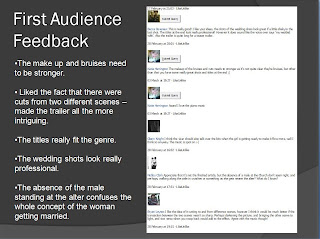
- We talked about how our first audience feedback highlighted and pinpointed certain problems and improvements that could be made to our first attempt. The main problem was the make-up and effetively expressing our concept in the way that we wanted.
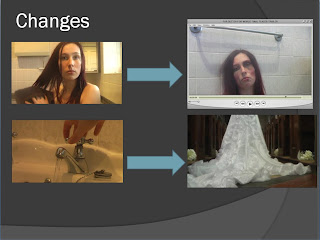
- We talked about the changes that we made after our feedback in order to make our entire concept clear. For instance, we deleted all of the orignal shots that showed the main character without any scarring and replaced the opening of the tap running with just the bride to make things more simpler and to shcok and draw in the viewer instantly.
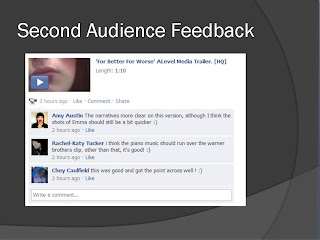
- The second audience feedback was also used noted so that we were able to see where and if we had managed to imporve the presentation of our whole concept when it came to a drama genre dealing with domestic abuse. We disuessed the more positive feedback, especially concerning the clarity of our film.
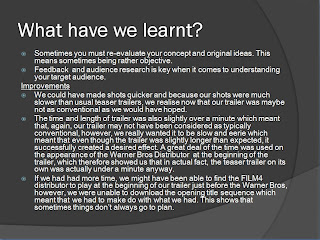
- We notified what we had learnt from our audience as well as our own performance and product. It was also very important to note down the imporvements we would make if we had to complete this project again.


- We also discussed the amount of technology and computer programmes we had used and also presented the benefits and drawbacks that were apparent with each one.







